How hot are serrano peppers? Serrano peppers typically range from 10,000 to 23,000 Scoville Heat Units (SHU), making them 2 to 5 times hotter than jalapeños. This small, vibrant chili packs a punch of bright, clean heat perfect for salsas, sauces, and marinades.
What Is a Serrano Chile Pepper?
The serrano chile pepper (Capsicum annuum) originates from the mountainous regions of Mexico, with its name derived from "sierra" meaning mountain range. These peppers are small, typically 2–4 inches long, and prized for their vibrant flavor and moderate heat. They start green and mature to red, orange, brown, or purple, with ripening increasing both sweetness and heat intensity.
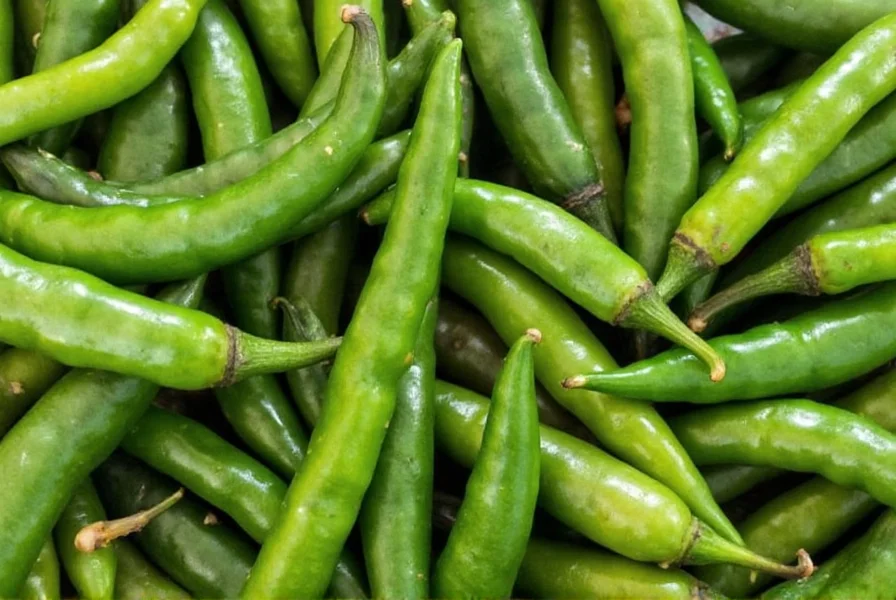
How Hot Are Serrano Peppers?
| Pepper | Heat Level (SHU) |
|---|---|
| Green Bell Pepper | 0 |
| Jalapeño | 2,500 – 8,000 |
| Serrano | 10,000 – 23,000 |
| Cayenne | 30,000 – 50,000 |
| Habanero | 100,000 – 350,000 |
Serranos deliver sharp, immediate heat without lingering burn, making them ideal for dishes needing bold flavor impact. Their heat level is consistent across varieties, though red serranos tend to be slightly hotter than green ones due to increased capsaicin development.
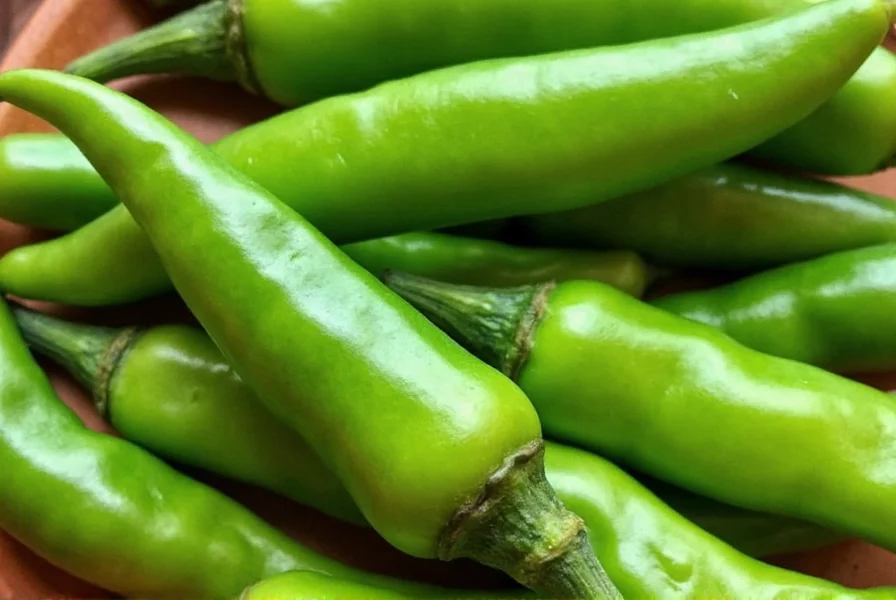
Creative Ways to Use Serrano Chiles
1. Classic Serrano Salsa Recipe
- Ingredients: 4 serrano peppers (seeds removed for milder heat), 1 cup diced tomatoes, 1/4 cup red onion, 2 tbsp fresh cilantro, 1 tbsp lime juice, salt to taste
- Instructions: Combine all ingredients in a bowl. Let sit for 15 minutes to meld flavors. Serve with tortilla chips or as a topping for tacos.
2. Serrano Chili Oil
- Ingredients: 1 cup neutral oil (like canola), 4-5 serrano peppers (sliced), 2 garlic cloves (crushed), 1 tsp salt
- Instructions: Heat oil in a small saucepan over medium heat. Add serranos and garlic, cook for 5 minutes until fragrant but not browned. Remove from heat, let cool, then strain. Store in a jar for up to 2 weeks.
3. Pickled Serrano Peppers
- Ingredients: 1 cup white vinegar, 1 cup water, 2 tbsp sugar, 1 tbsp salt, 10-12 whole serrano peppers
- Instructions: Bring vinegar, water, sugar, and salt to boil. Pour over peppers in a sterilized jar. Cool completely, then refrigerate for 24 hours before use. Keeps for 3 months.
4. Serrano Marinade for Grilled Chicken
- Ingredients: 2 serrano peppers (minced), 1/4 cup lime juice, 3 garlic cloves (minced), 2 tbsp olive oil, 1 tsp cumin, salt to taste
- Instructions: Mix all ingredients. Coat chicken breasts and marinate for 1-2 hours. Grill until fully cooked.
5. Roasted Serrano Tomato Sauce
- Ingredients: 6 serrano peppers, 2 cups tomatoes, 1 onion (chopped), 2 garlic cloves, 1 tsp oregano
- Instructions: Roast peppers and tomatoes at 400°F for 20 minutes. Blend with onion, garlic, and oregano until smooth. Simmer for 10 minutes. Perfect for enchiladas or eggs.
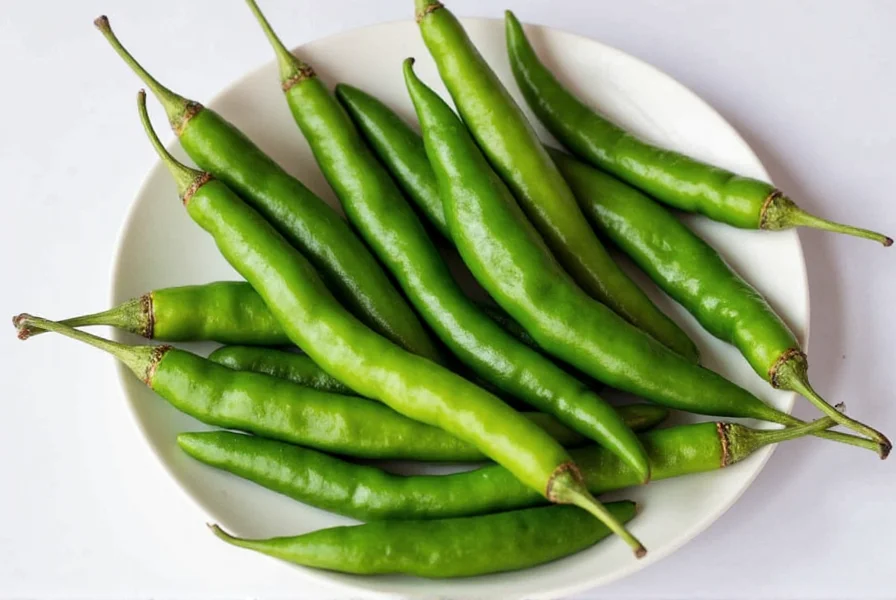
Buying Guide: How to Choose the Best Serrano Peppers
1. Know What You're Looking For
- Color: Green serranos are grassy and milder; red ones are sweeter and hotter.
- Texture: Look for firm, glossy skin without wrinkles or soft spots. Avoid dull or shriveled peppers.
- Stem: Fresh green stems indicate peak freshness; brown or dry stems mean older produce.
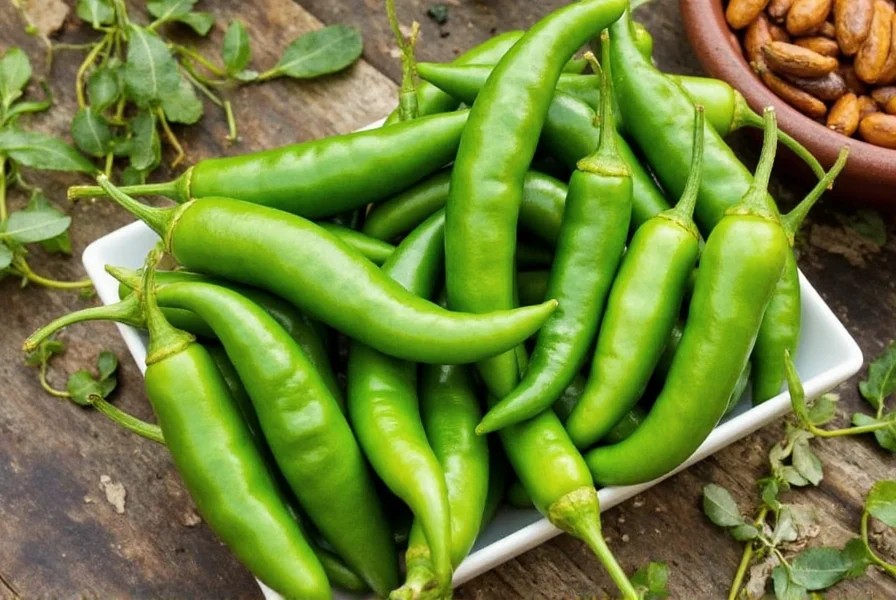
2. Consider the Source
For best flavor, choose local farmers' markets or Latin grocery stores. Look for peppers labeled "Mexican serrano" for authentic taste. Avoid bulk bins where peppers may be handled excessively.
3. Buy in Season
Peak season is July-October for optimal flavor and price. Year-round availability in supermarkets is common, but quality varies—check for firmness and vibrant color.
4. Quantity Guide
- For fresh salsas or garnishes: 1-2 peppers per person
- For sauces or marinades: 3-5 peppers depending on desired heat level
- For pickling: 10-12 whole peppers for a standard jar
Growing Your Own Serrano Chilies at Home
Step-by-Step Growing Tips:
- Start Seeds Indoors: 6-8 weeks before last frost. Use seed trays with well-draining soil mix.
- Soil Requirements: Mix 50% potting soil with 50% compost. Ensure pH 6.0-7.0 for optimal growth.
- Light and Temperature: Place in full sun (6-8 hours daily). Maintain 70-85°F during germination.
- Watering: Water deeply when top inch of soil is dry. Avoid overwatering to prevent root rot.
- Harvesting: Pick peppers at 2-4 inches long. Green for milder heat, red for maximum sweetness and heat.
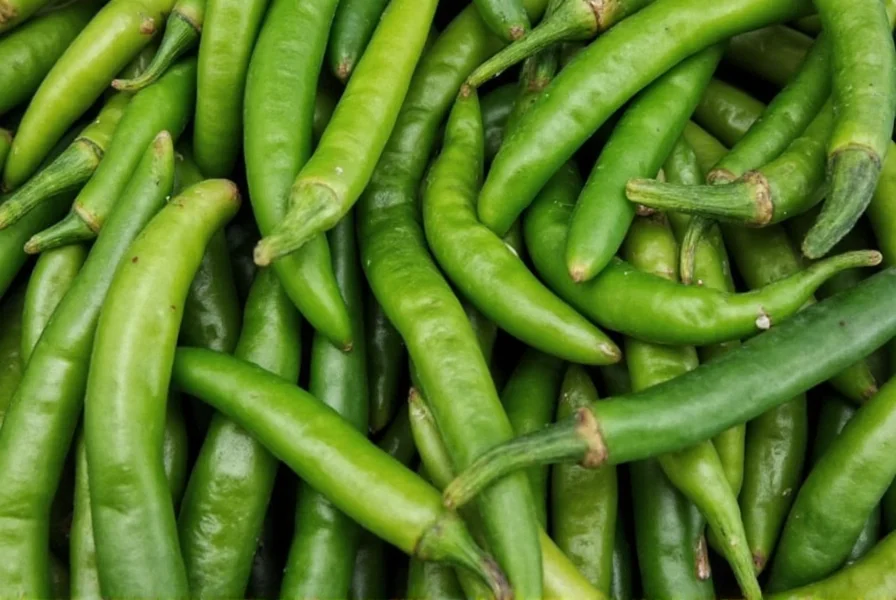
Frequently Asked Questions
How can I identify a serrano pepper versus other similar chilies?
Serrano peppers are typically 2-4 inches long with a smooth, glossy skin and distinct tapering shape. They're slender and straighter than jalapeños, which are larger and more bulbous. Look for vibrant green or red color and fresh green stems. When shopping, avoid peppers with soft spots or wrinkles.
What's the difference between serrano peppers and jalapeños?
Serranos are smaller (2-4 inches vs 3-5 inches for jalapeños), hotter (10,000-23,000 SHU vs 2,500-8,000 SHU), and have a brighter, cleaner heat profile. Jalapeños are often used raw for mild heat, while serranos work best in cooked dishes where their flavor intensifies.
Can I Eat Serrano Peppers Raw?
Yes! Serranos are commonly eaten raw in salsas, salads, and garnishes. Their crisp texture and sharp heat make them perfect for uncooked applications. Always wash thoroughly before eating raw, and handle with care—wear gloves if sensitive to capsaicin.
How do I store serrano peppers to keep them fresh?
Store unwashed serranos in a paper bag inside the refrigerator crisper drawer. They'll stay fresh for 1-2 weeks. For longer storage, freeze whole or sliced peppers in a zip-top bag for up to 6 months. Thaw before using in cooked dishes.
How do I reduce the heat when cooking with serranos?
Remove seeds and white membranes (placenta) where most capsaicin concentrates. Soak sliced peppers in milk or lime juice for 15 minutes to mellow heat. Start with less than you think you need—you can always add more heat but can't remove it.
Do serrano peppers get hotter after picking?
Yes, slightly. Stored at room temperature, they continue ripening and developing capsaicin, increasing heat and sweetness. To slow ripening, refrigerate immediately. Red serranos are always hotter than green ones due to extended ripening time.
Conclusion
Whether you're admiring a picture of serrano chile pepper or slicing one up for dinner tonight, these versatile peppers bring both flavor and spice to any dish. From precise buying tips to detailed recipes and growing instructions, serrano chiles are a must-have ingredient for spice lovers. Next time you see them in the produce section, grab a few—they're guaranteed to elevate your cooking with their bright, clean heat.
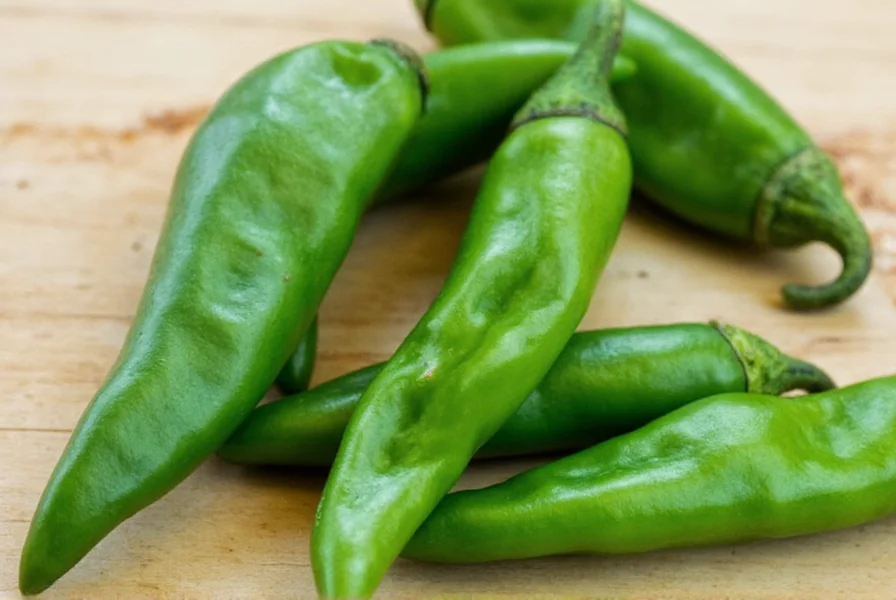

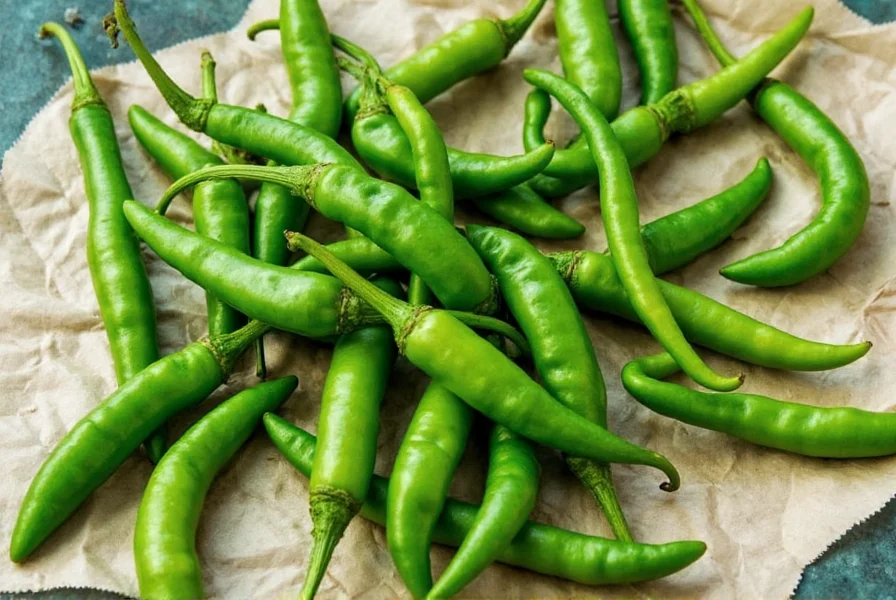









 浙公网安备
33010002000092号
浙公网安备
33010002000092号 浙B2-20120091-4
浙B2-20120091-4